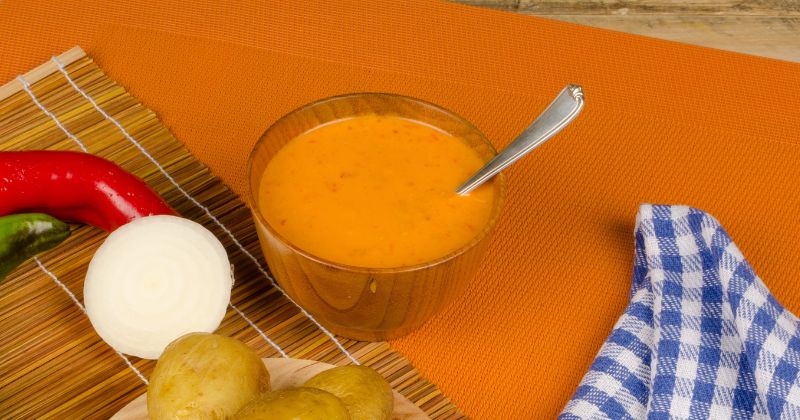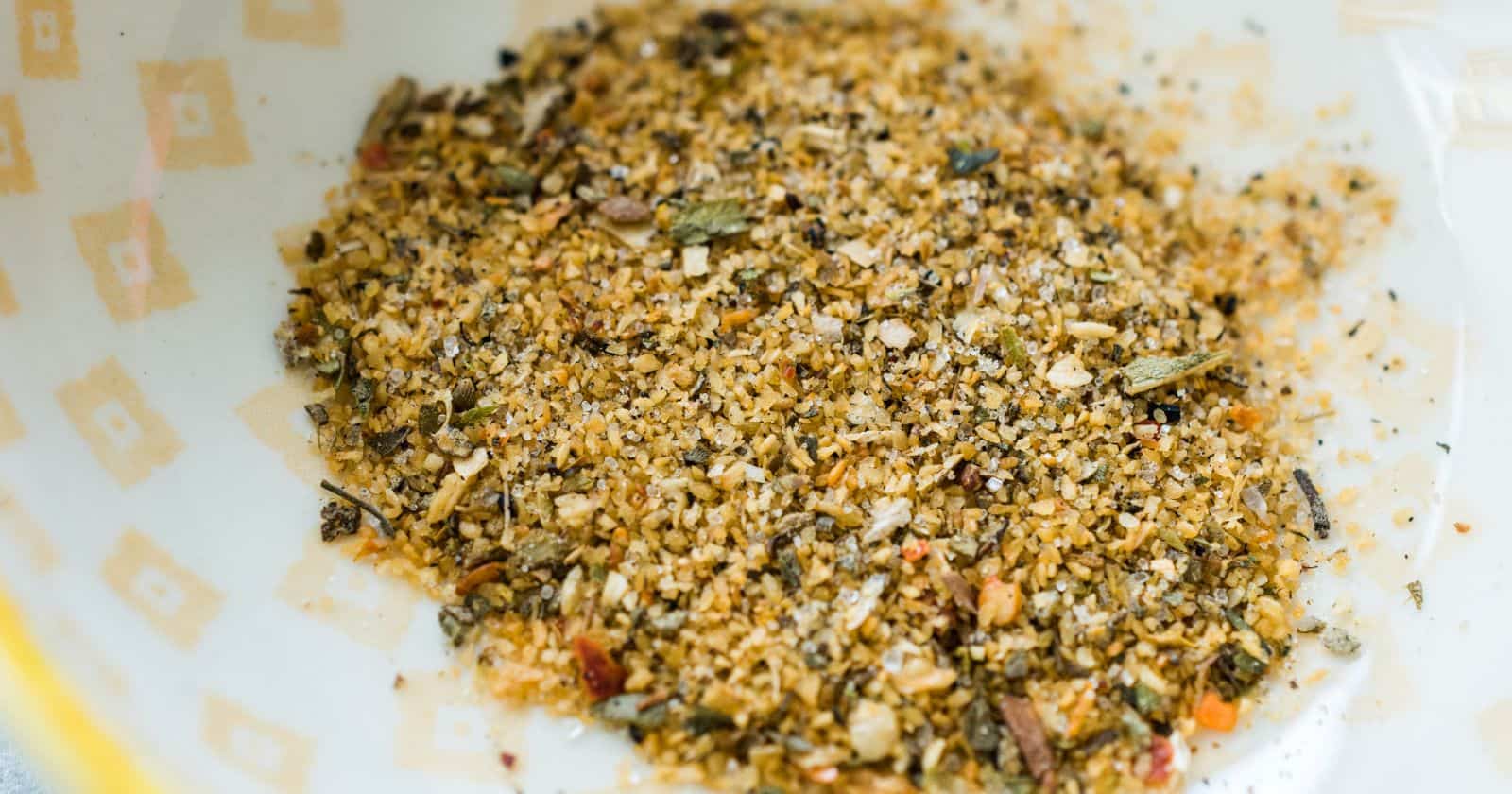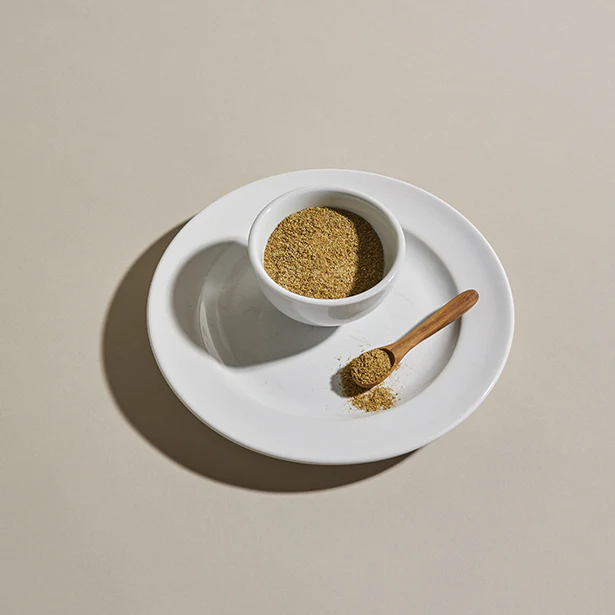Are you looking for something to give your cooking an extra flavor boost? Have you searched for the perfect seasoning blend to take your dish to the next level? If so, the magic of adobo seasoning is here!
Adobo seasoning is a unique blend of herbs and spices originating from Spain, where it has become a staple in their traditional cuisine. It has since spread worldwide, with international versions from Spain, the Philippines, and Latin America.
With its harmonious combination of warm and zesty flavors, adobo seasoning can be used as a multi-purpose
This article explores everything you could want to know about adobo seasoning; where it comes from, what flavors make up this popular
We’ll also discuss different types of cultural cuisines that use their version of an adobo
So if you want to understand more about this fantastic flavor enhancer and get some inspiration for cooking flavorful meals, let’s dive into The Magic Of Adobo Seasoning: Elevate Your Cooking Game!
Understanding Adobo Seasoning: What Is It And Where Does It Come From?
Adobo is a cooking process rooted in the Spanish word adobar, which means marinade. Historically, it is a pickling sauce made with olives, vinegar or wine, and spices. Today, however, it is more commonly used to flavor food and can be used as a dry rub or marinade.
Cooking adobo involves simmering the meat in vinegar and spices over low heat. This helps soften the tang of the vinegar while intensifying the flavor of the meat and creating a silky sauce usually served with fragrant white rice. Adobo blends are also popularly used for seasoning beans and other dishes.
Adobo seasoning has become increasingly popular due to its versatility and easy preparation. It can be used on meats such as chicken or pork and vegetables like potatoes or squash.
Additionally, it can be added to soups or stews for extra flavor without spending time preparing complicated ingredients. The combination of spices also adds an interesting depth of flavor that can elevate any dish from ordinary to extraordinary!
It’s also highly versatile; you can adjust each
The Flavor Profile Of Adobo Seasoning
Adobo seasoning is a popular blend of herbs and spices that flavor dishes. The traditional mix includes garlic powder, salt, oregano, onion powder, and black pepper.
Cuban adobos often include garlic, cumin, and sour orange juice, while Puerto Ricans prefer vinegar and oregano. In addition to these ingredients, sea salt grinder and garlic powder are commonly used in adobo seasoning blends.
Before cooking, Adobo adds a unique flavor to meats, poultry, seafood, and vegetables. It can also give sauces and marinades an extra kick of flavor. This all-purpose Latin seasoning is made from salt, garlic, spices such as black pepper and turmeric, and tricalcium phosphate for added texture.
Other ingredients that may be included in an adobo seasoning blend are citric acid for a zesty lemon flavor or dried mint for an herbaceous touch.
Cajun
How To Use Adobo Seasoning
Looking to add a burst of flavor to your meals? Adobo seasoning is the way to go. Here are some tips and tricks for making the most out of this versatile
- Create your own adobo dry mix seasoning with five simple ingredients. (garlic powder, salt, oregano, onion powder, and black pepper.)
- Sprinkle the seasoning directly onto meat, beans, stews, and rice.
- Combine the adobo seasoning with liquid and freshly chopped ingredients like onions or garlic for a flavorful marinade.
- Store your adobo in an airtight container away from heat, light, and moisture. Glass containers are eco-friendly and offer extra protection against moisture.
- Remember that a bit of adobo seasoning goes a long way! Start with small amounts and add more as needed to avoid overpowering the other flavors in your dish.
Adobo Seasoning In International Cuisines
Adobo seasoning is a versatile, easy-to-make seasoning that has become popular in many international cuisines worldwide. Here are some of the ways it is used in different countries:
Mexican Cuisine

Adobo seasoning is often used as a marinade for beef or pork in Mexican cuisine. This flavorful marinade adds depth and tenderness to proteins, making them perfect for tacos or burritos. Adobada is another popular dish made with proteins marinated in adobo seasoning overnight and cooked over an open flame.
This cooking method adds smokiness and juiciness to the meat while retaining the adobo marinade’s flavor.
Filipino Cuisine

Filipino Adobo is a signature dish that uses a mixture of vinegar, soy sauce, garlic, bay leaves, and black pepper as key ingredients to cook chicken or pork until tender and flavorful.
The acidity of the vinegar helps to keep bacteria away while adding a tangy flavor that is beloved by Filipinos all over the world. Adobo is often served with rice or vegetables for a complete meal experience.
Portuguese and Spanish Cuisines

Adobo seasoning originated in Spain and Portugal, where it was used to preserve meat. It is still a staple in these cuisines and is used in dishes like Piri Piri Chicken or roasted pork loin. The seasoning is also added to stews and soups for extra flavor and depth of taste.
Uruguayan Cuisine

In Uruguay, adobo seasoning is often used in mojo sauce, a tangy and slightly spicy condiment made with garlic, oil, vinegar, and adobo seasoning. This flavorful sauce is usually served with meats or as a dipping sauce for bread.
Homemade Adobo Seasoning Recipe: Make Your Own Blend Of Adobo
Homemade Adobo seasoning is an easy way to add flavor to any dish! In this recipe, we’ll show you how to make your own blend of Adobo seasoning that can be used in various dishes like meats, vegetables, soups, and stews. Here’s what you’ll need:
Ingredients:
- 2 tablespoons paprika
- 2 tablespoons black pepper
- 2 tablespoons onion powder
- 1 tablespoon dried oregano
- 1 tablespoon cumin
- 1 tablespoon garlic powder
- 1 tablespoon chili powder
Instructions:
- In a bowl, combine all of the ingredients and mix well. Make sure all the ingredients are evenly distributed.
- To achieve a finer blend, pulse the mixture in a coffee grinder for 3-4 seconds.
- Transfer the Adobo seasoning to an airtight container and store it in a cool, dry place.
- Use as needed in your favorite dishes! Start by adding small amounts and adjust the seasoning to your taste.
That’s it! This homemade Adobo seasoning recipe is easy to make and can be used as a marinade or seasoning for meats, vegetables, and more. When using Adobo seasoning, be careful not to overdo it, as too much can overpower other flavors in your dish.
Other spices like cayenne pepper or smoked paprika can also be added for an extra kick of flavor. With this homemade version at your disposal, you’ll never have difficulty adding unique flavors to your cooking again!
Adobo Seasoning Substitutes
Running out of Adobo seasoning can be a frustrating experience, but fear not! There are several substitutes you can use to keep your dish flavorful. Here are a few options:
Cajun Seasoning
Cajun seasoning is a great choice if you’re looking for a substitute with a similar flavor profile to Adobo. It has a similar herb profile with oregano as the main ingredient and can be used as a 1:1 substitute.
Greek Seasoning
With more herbs than Cajun seasoning, Greek seasoning can be a tasty alternative. It contains herbs like thyme and marjoram in addition to oregano, giving it a unique flavor profile.
Caribbean Jerk Seasoning
Caribbean Jerk seasoning is a great choice for those looking for a spicy option. It contains spices like allspice, nutmeg, cinnamon, and cayenne pepper, giving it a signature flavor and heat.
Black Pepper
If you’re looking for something simple, black pepper can be a great substitute. It can add extra flavor to your dish and has health benefits.
Chili Powder
Another option is using chili powder as a substitute. To make an Adobo-inspired sauce with chili powder, mix 1 and ½ tablespoons Italian seasoning with ¼ cup water, 2 tablespoons soy sauce, 2 tablespoons vinegar, and 1 teaspoon lemon juice or lemon zest for added citrus notes.
Ancho Chili Paste
Ancho Chili Paste is an excellent option for those who prefer a smoky flavor with heat. It contains smoked dried chilies and can be used instead of Adobo to give your dish a unique, smoky flavor.
Remember, each of these substitutes has a unique flavor profile, so adjust the amount you use. With these options available, you can still make a flavorful dish without Adobo seasoning!
Where to Buy Adobo Seasoning?
Adobo seasoning is a popular
If you prefer shopping online, many retailers like Amazon, Walmart, and Target offer Adobo seasoning on their websites. You can also check specialty food stores or international markets with Latin American or Filipino ingredients.
Used initially in Spain and Portugal for curing meat, adobo's rich flavors are delicious with vegetables, too.
Today, it is used in Uruguayan mojo sauce and Mexican Puerco Yucateco.






